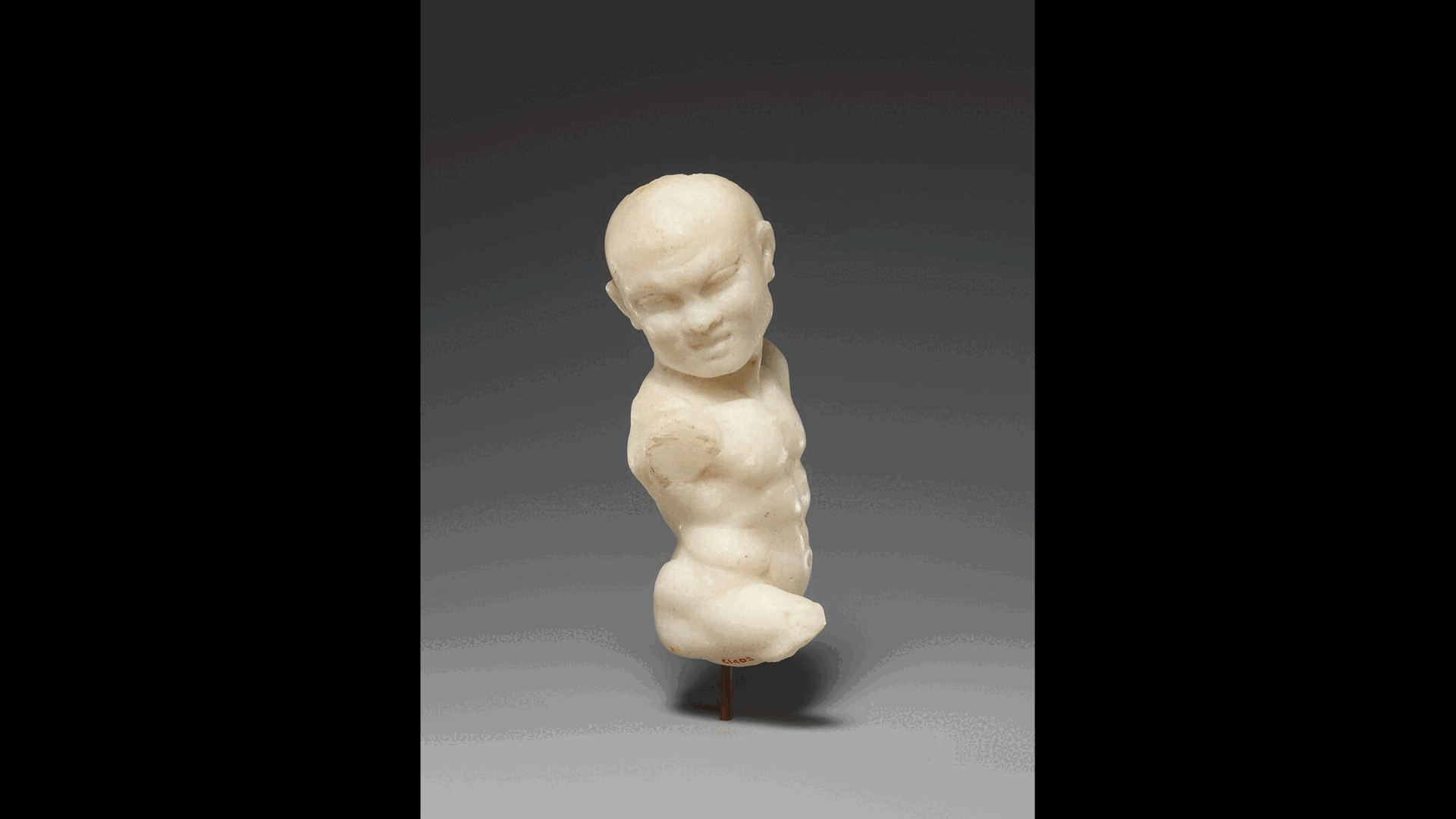
What it is: A marble statuette
Where it is from: Alexandria, Egypt
When it was made: Sometime between 332 and 150 B.C., during the Ptolemaic period
What it tells us about the past:
This marble statuette depicts a dwarf-dancer, which was a common motif in ancient Mediterranean art. But while examples from Greece were usually exaggerated or grotesque, suggesting dwarves were stigmatized, this one from Egypt shows that dwarves were honored members of the culture, rather than caricatured.
The sculpture — just 4 inches (10 centimeters) tall — depicts a nude man whose torso is twisted in a way that implies movement. His arms and legs are missing, as well as the back of his head. The statuette is on display at the Metropolitan Museum of Art in New York City.
The Met notes that the statuette combines the classical Greek tradition of nudity with a highly skilled rendering of the man's musculature in the later Hellenistic style which, combined with its discovery in Egypt, suggests that there was strong interest in depicting different human body types in the Ptolemaic period. During this dynasty, Egypt was ruled by Ptolemy I Soter I, a general of Alexander the Great who took over part of the empire following the Macedonian king's death.
But dwarves in Egyptian culture far predate the Ptolemies. Early written records in Egypt from four millennia ago mention dwarfs and pygmies associated with the households of nobles and pharaohs, where they were usually held in high esteem. Part of this esteem may be related to the Egyptian god Bes who, according to the Ashmolean Museum, is usually depicted as being very short with strong muscles and an expressive face. Bes was a warrior and protector who watched over women in childbirth. He was also a dancer who frequently played the tambourine.
According to The Met, this marble dwarf-dancer, who may have held an ancient percussion instrument, is thus part of "the long Egyptian tradition in which dwarves were integrated in society and had, in general, positive associations."







